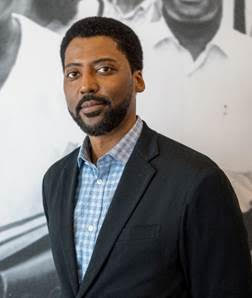[ad_1]

LeRonn P. Brooks.
KAY HICKMAN
LeRonn P. Brooks will assume the newly created role of associate curator for modern and contemporary collections at the Getty Research Institute in Los Angeles in June. In this post, Brooks, who currently works an assistant professor in the Africana studies department at Lehman College in New York, will specialize in African-American art.
At the GRI, Brooks will build collections and present programs related to African-American art. He is the first full-time staff member hired at the organization under its new African American Art History Initiative, which will involve partnerships with other institutions, the digitization of archival collections, publications, and other research projects.
Brooks was a curator of the Racial Imaginary Institute’s 2018 exhibition “On Whiteness” at the Kitchen in New York and the 2016 show “Bronx: Africa” for the Bronx Council on the Arts. He has contributed to BOMB Magazine and the International Review of African American Art, and he has written catalogue essays for the Spelman Museum of Art in Atlanta, the Mississippi Museum of Art in Jackson, and the Studio Museum in Harlem, among other institutions.
Brooks said in a statement, “I have found it beneficial to use my scholarship, understanding of historical contexts and curatorial practice to examine the intersections between representations of African-American visual cultures and society. I look forward to working alongside amazing colleagues doing similarly important and timely work at the Getty.”
Andrew Perchuk, the GRI’s deputy director, said, “With the African American Art History Initiative, the Getty Research Institute is making a strong, long-term commitment to the field of African-American art history and hiring a talented scholar to build and develop our collections, and related programs is a major part of that effort. LeRonn Brooks’s career has emphasized collaboration and interdisciplinary studies, an approach that we value as we work with partner institutions and living artists to promote advanced research in African-American art history and, ultimately, a fuller and richer picture of American art.”
[ad_2]
Source link

